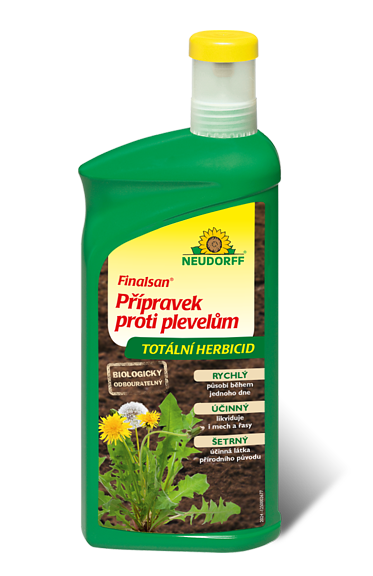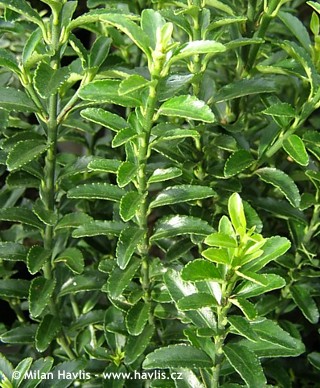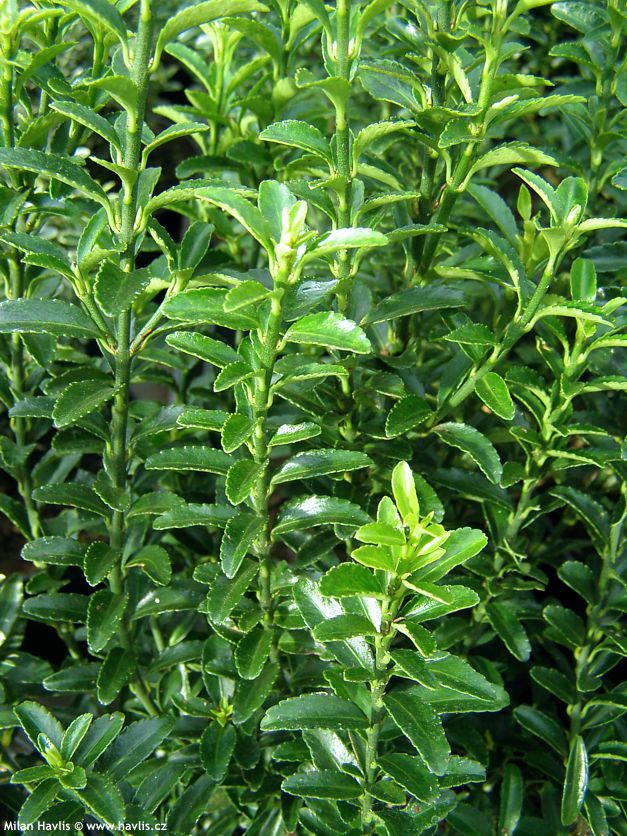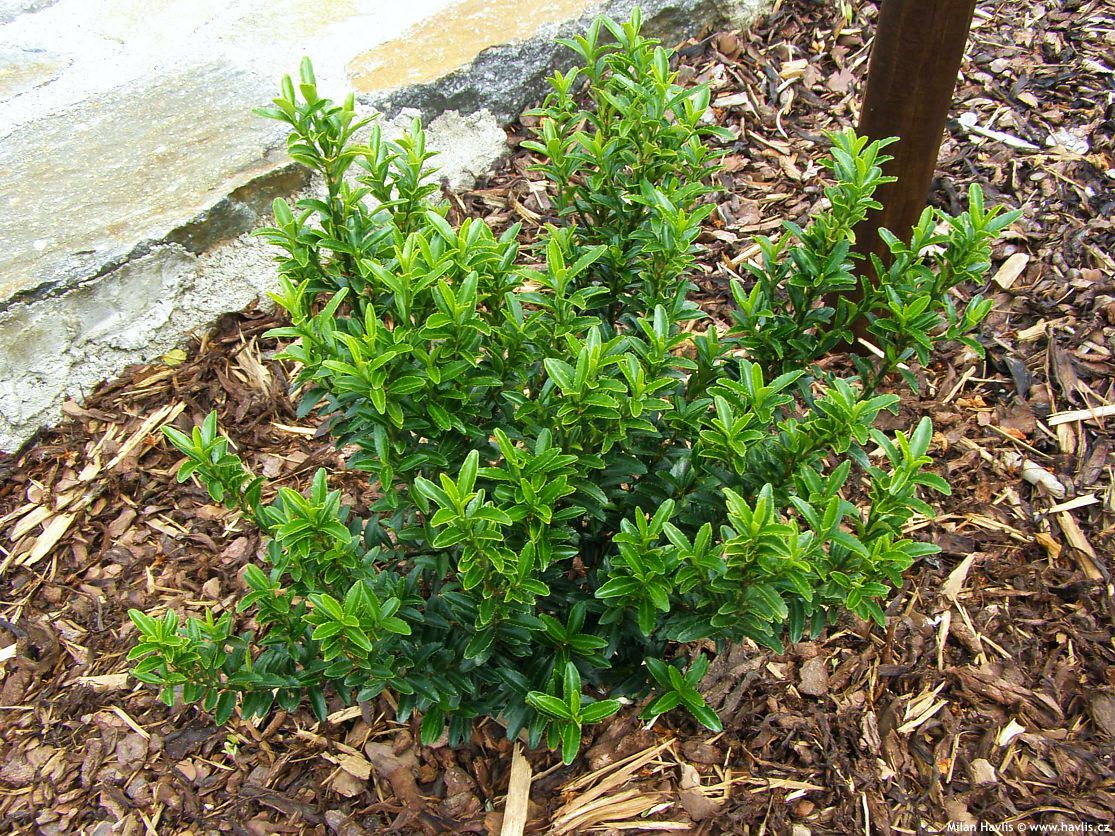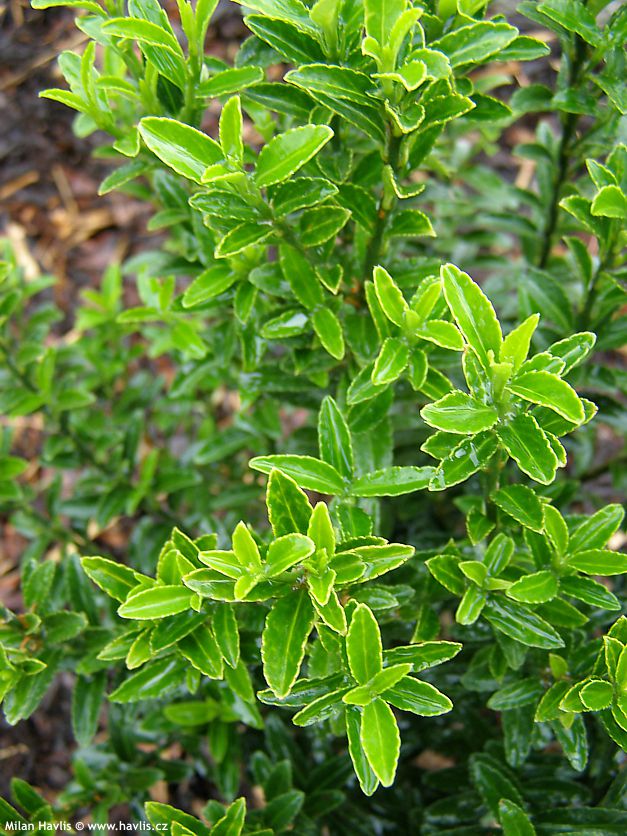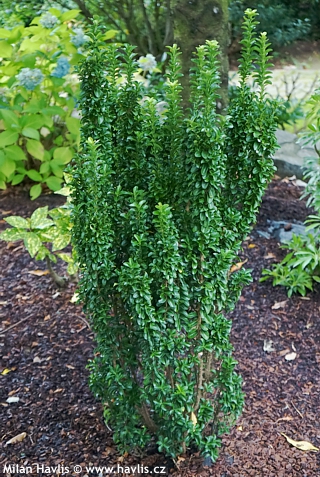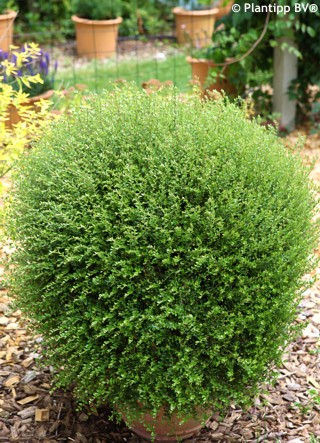Euonymus japonicus 'MICROPHYLLUS' boxleaf euonymus, dwarf Japanese spindle
Euonymus
Euonymus is a botanically diverse genus of woody plants that includes both deciduous and evergreen shrubs as well as small trees. In nature, it is found primarily in the temperate zones of the Northern Hemisphere – from Europe through the Caucasus to East Asia. Some species have also spread into the tropical regions of Southeast Asia and Australia. In gardens, the most encountered representatives include Euonymus europaeus with its striking pink fruits, Euonymus fortunei which creeps and climbs along walls, and the evergreen Euonymus japonicus, forming compact shrubs with glossy leaves. The genus is known for its adaptability to various conditions, making it a popular choice for urban greenery, hedges, and collector plantings. The wood of some species, especially those with a denser structure, has traditionally been used in Asia to make fine calligraphy brushes – valued for its strength and delicate fibrous texture.
Euonymus japonicus originates from Japan, Korea, and southeastern China, where it grows in coastal forests and on sunny slopes. It was scientifically described by Swedish botanist Carl Peter Thunberg (1743–1828), who discovered it during his travels in Japan, where he worked as a physician and naturalist. The species was introduced to Europe in the 19th century, likely through botanical collections from Japan, where it is culturally respected not only as an ornamental plant but also as a symbol of stability and protection. In some regions, its branches are hung above doorways as a talisman against evil spirits – like how mistletoe is used in Central Europe. In urban landscaping, it is valued for its resistance to wind, salty air, and pollution, making it an ideal candidate for planting in parks, streets, and terraces in areas where it is reliably hardy.
Microphyllus is a dwarf, green-leaved cultivar of Japanese spindle, distinguished by its small, firm leaves measuring approximately 2 × 0.5 cm. The foliage is glossy, deep green, evergreen, and forms a dense, compact shrub with a regular habit. The upright branches grow closely together, creating the impression of a carefully structured plant. Its growth is very slow – only around 10 cm per year – giving it the appearance of a miniature boxwood, but with a finer texture. The flowers are inconspicuous and appear in summer, though they are not of ornamental significance. As the first known small-leaved form, it was introduced to Europe by German physician and botanist Philipp Franz von Siebold (1796–1866), who worked in Japan during the first half of the 19th century. His botanical collections and descriptions helped spread this compact, green-leaved variant, which later served as the basis for variegated cultivars.
Thanks to its regular shape, fine-textured foliage, and slow growth, Microphyllus has become a popular choice for formal plantings and collector gardens. It is well suited for low hedges, bed edging, or container planting. It pairs beautifully with larger-leaved plants such as Leucothoe, Pieris, or fine-leaved Hebe cultivars. In modern gardens, it serves as a subtle green element that can be shaped into neat spheres or other geometric forms. In Japanese-style compositions, it works well as a backdrop for stones, ferns, or bonsai, where its simplicity enhances the overall harmony. Its neutral colour makes it easy to combine with compact flowering perennials without disrupting their colour scheme.
Dwarf euonymus cultivars rank among the hardiest forms of Euonymus japonicus, resistant not only to frost but also to pests such as euonymus scale. They thrive best in full sun to partial shade; in deep shade, growth tends to be weak and sparse. Summer sun is well tolerated, but in winter and early spring, variegated cultivars should be placed where they are not exposed to direct sunlight all day, especially if the soil is dry and the air is windy. In such conditions, leaves may lose colour or suffer sunburn, but the plant reliably regenerates in spring. It tolerates almost any well-drained, moderately moist soil which needs some moisture even in winter. Once established, it can withstand rather substantial dry spells. If grown in containers, move them to a cool, bright room for winter, ideally around 5 °C, and during the growing season fertilize it occasionally to prevent leaf drop in the lower parts. Thanks to its slow and dense growth, it requires no pruning but can be shaped or trimmed anytime from spring to mid-summer. Hardy to –24 °C (USDA zone 6).
Last update 19-01-2009; 6-10-2025






























